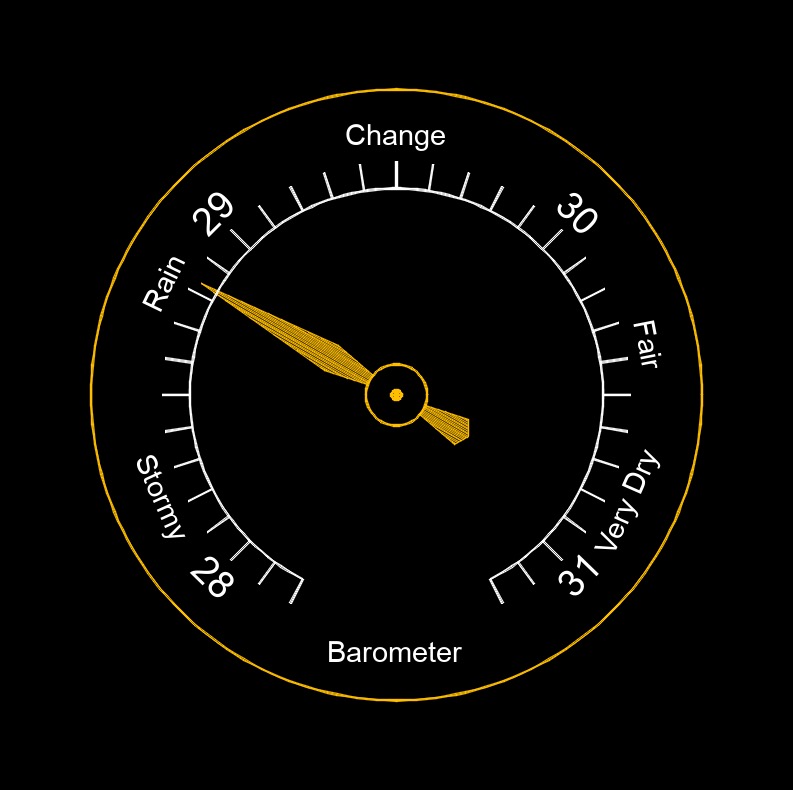Atmospheric Pressure
Atmospheric Pressure Formula |
||
| \( p_a \;=\; 101.3 \cdot \left( \dfrac{ 293 - 0.0065\;z }{ 293 } \right)^{5.26} \) | ||
| Symbol | English | Metric |
| \( p_a \) = Atmospheric Pressure | - | \(kPa\) |
| \( z \) = Elevation above Sea Level | - | \(m\) |
 Atmospheric pressure, abbreviated as \(p_a\), also called barometric pressure, is the force exerted by the weight of the Earth's atmosphere on the surface of the Earth. It is caused by the gravitational attraction of the Earth on the molecules that make up the air in the atmosphere. At sea level, atmospheric pressure is approximately 101.3 kilopascals (kPa) or 1 atmosphere (atm). The pressure decreases with increasing altitude because the mass of the atmosphere above decreases. At high altitudes, atmospheric pressure is lower than at sea level.
Atmospheric pressure, abbreviated as \(p_a\), also called barometric pressure, is the force exerted by the weight of the Earth's atmosphere on the surface of the Earth. It is caused by the gravitational attraction of the Earth on the molecules that make up the air in the atmosphere. At sea level, atmospheric pressure is approximately 101.3 kilopascals (kPa) or 1 atmosphere (atm). The pressure decreases with increasing altitude because the mass of the atmosphere above decreases. At high altitudes, atmospheric pressure is lower than at sea level.
Atmospheric pressure can be measured using a barometer, which is a device that measures the height of a column of mercury or other liquid that is supported by the pressure of the atmosphere. The unit of measurement for atmospheric pressure is the pascal (Pa), although other units such as millibars (mb) or inches of mercury (inHg) are also commonly used.
Atmospheric pressure has important effects on weather and climate, as well as on human and animal physiology. For example, changes in atmospheric pressure can cause changes in the weather, such as the formation of storms or changes in wind patterns. In addition, changes in atmospheric pressure can affect the human body, such as causing ear discomfort during airplane flights or affecting the ability to breathe at high altitudes.

